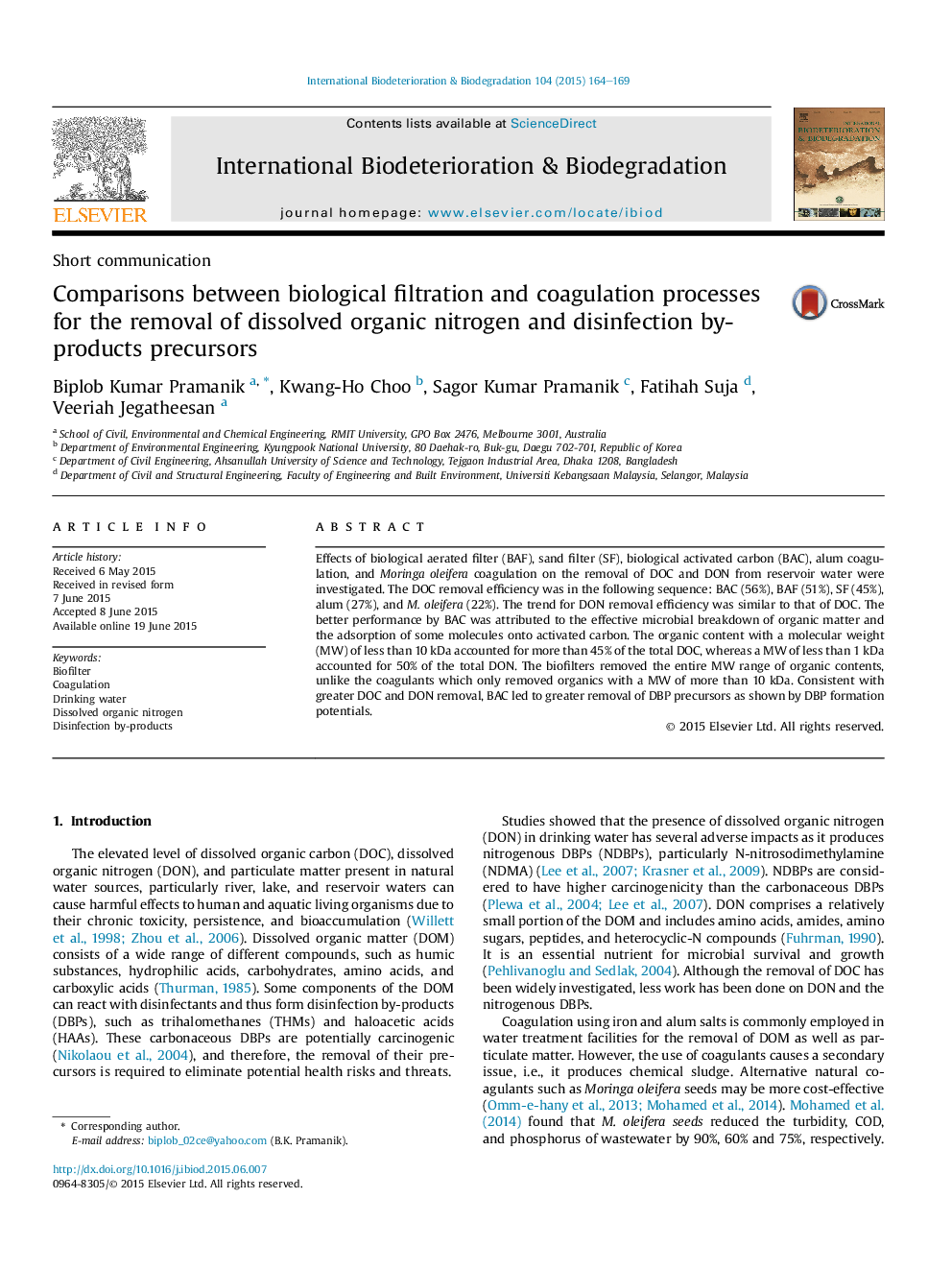| کد مقاله | کد نشریه | سال انتشار | مقاله انگلیسی | نسخه تمام متن |
|---|---|---|---|---|
| 4364475 | 1616313 | 2015 | 6 صفحه PDF | دانلود رایگان |
• The fractions with a MW of less than 1 kDa had 50% of the total DON.
• MW of less than 1 kDa are major responsible for DBPs precursors.
• BAC process was most effective in removing DON and DBP precursors.
• Alum coagulants were good for DON removal than Moringa oleifera.
Effects of biological aerated filter (BAF), sand filter (SF), biological activated carbon (BAC), alum coagulation, and Moringa oleifera coagulation on the removal of DOC and DON from reservoir water were investigated. The DOC removal efficiency was in the following sequence: BAC (56%), BAF (51%), SF (45%), alum (27%), and M. oleifera (22%). The trend for DON removal efficiency was similar to that of DOC. The better performance by BAC was attributed to the effective microbial breakdown of organic matter and the adsorption of some molecules onto activated carbon. The organic content with a molecular weight (MW) of less than 10 kDa accounted for more than 45% of the total DOC, whereas a MW of less than 1 kDa accounted for 50% of the total DON. The biofilters removed the entire MW range of organic contents, unlike the coagulants which only removed organics with a MW of more than 10 kDa. Consistent with greater DOC and DON removal, BAC led to greater removal of DBP precursors as shown by DBP formation potentials.
Journal: International Biodeterioration & Biodegradation - Volume 104, October 2015, Pages 164–169
